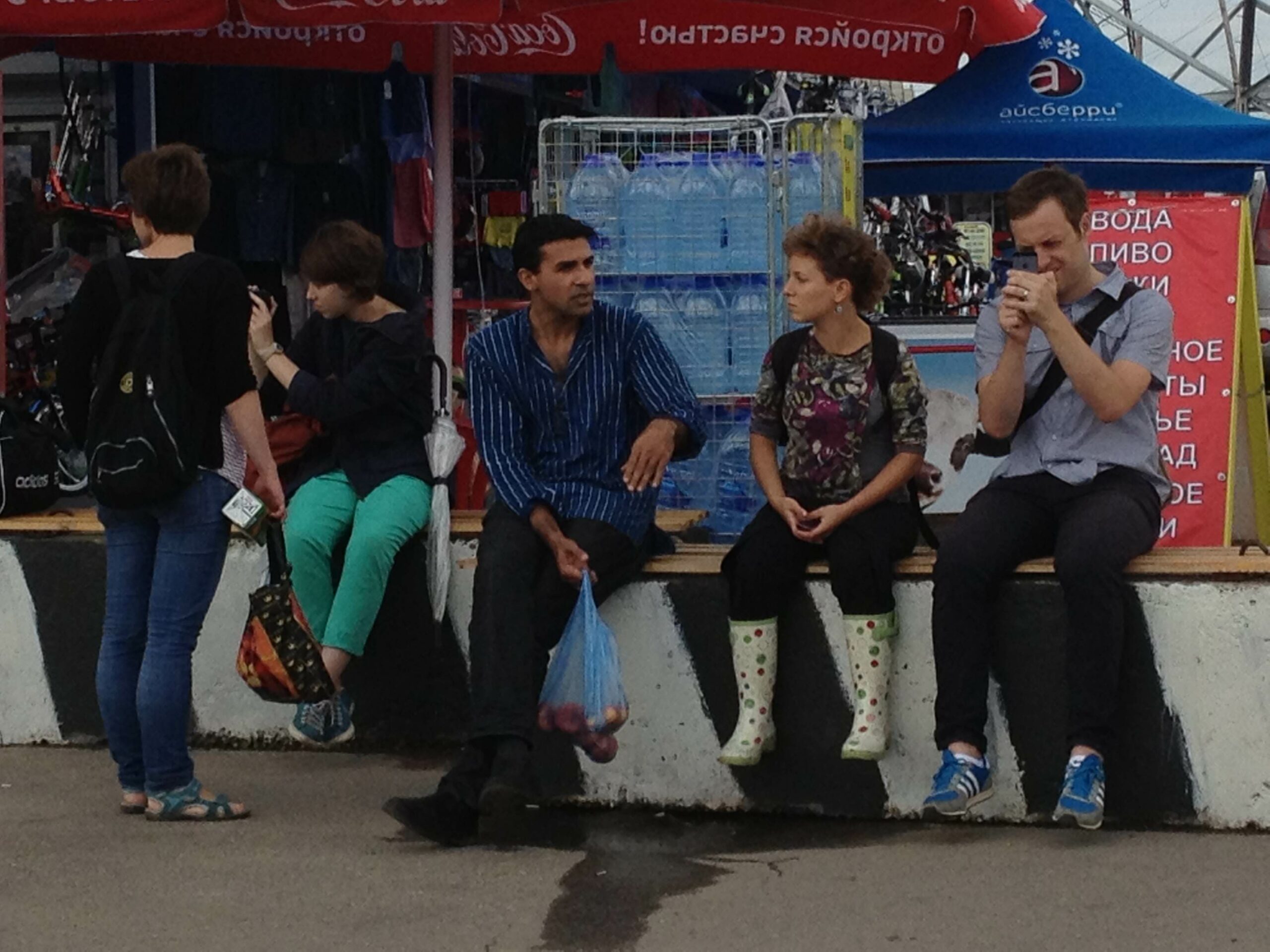
Our field visit to Slavyanskiy Mir revealed a place quite different from what we experience within the center or even the MKAD borders of Moscow. It exists in stark contrast to nearby global shopping markets which are also like mini cities, like Ashaan, IKEA, and Stockmann. But Slavyanskiy Mir might be the last informal, outdoor market of this magnitude in or around Moscow: a site of socialization, exchange and human interaction. Its own city. It is an excellent example of immigrant place-making, with a lack of official infrastructure (and possibly regulation). Maybe a very borderless space or micro city, in relation to Moscow?
Slavyanskiy Mir, it seems, is the alternative to the neo-liberalization of markets and shopping experiences evidenced in Moscow. Using photography and interview techniques, we visited the site to gather preliminary insights and stumbled upon many interesting experiences and borders.
Getting there
Our team of researchers, journalists and photographers took the orange line and got off at the Tyopli Stan metro station. From there, we took mashrutka 504 outside of the local mall and were shuttled on to the highway. We finally reached the outdoor market, which is divided broadly into whole sale and retail. We found people of all ethnicities and nationalities, with poor-Russian as a shared but bordered way of communicating. The first and most immediate observation was a lack of pedestrian access – this is a space people come to from long distances, and navigating traffic to get into the market was slightly daunting.
Spatial Divisions
We realized through our observations that Slavyanskiy Mir could quickly and broadly be divided into four parts: the fruit / vegetable bazaar, a retail market, a wholesale market and a bus depot. But apart from this functional distinction, there was no other clear way of generalizing about spatial segregations. It seemed to be quite a diverse space.
Experience
At this market, people experience the value and importance of human exchange and interaction during transactions – and seem to create their own world, which in itself becomes a protective border. We got quick insights into the diverse migrant communities from across the former soviet regions and the world who have moved to areas around the city and are leading new lives. They contribute to the city in the form of food and cafes, which are unique cultural experiences, and by selling cheap goods, for the home or for the dacha.
Flows
Our research questions surrounded perceptions of flows, identity and citizenship in the context of a blurry but changing Russian legacy. We met people from Japan, Vietnam who came here as war refugees as well as Armenians, Azerbaijanis, Uzbeks, Moldovans, and Tajiks who moved here as part of the visa free policy under the former soviet territories. For them, it is a diverse and multicultural space in keeping with multinationalism that actually defines Russia. In a sense, Slavyanskiy is a more realistic representation of the many identities, nationalities and experiences from across the country – located very close, but bordered from the city of Moscow.
Micro-city?
Another interesting discovery was that this microcosm is, for many, their entire existence in Moscow. Not many travel into the city and in fact many bus drivers, it seems, might not ever even leave the site. So, how is Slavyanskiy Mir a representation of Moscow? What are the borders distinguishing it and how is it a unique microcosm of local, national and transnational flows? What are the invisible borders crossed, created – the relations with China in terms of trade in good and labor; or even of the foods and services.